Acute renal failure: symptoms, causes, emergency care
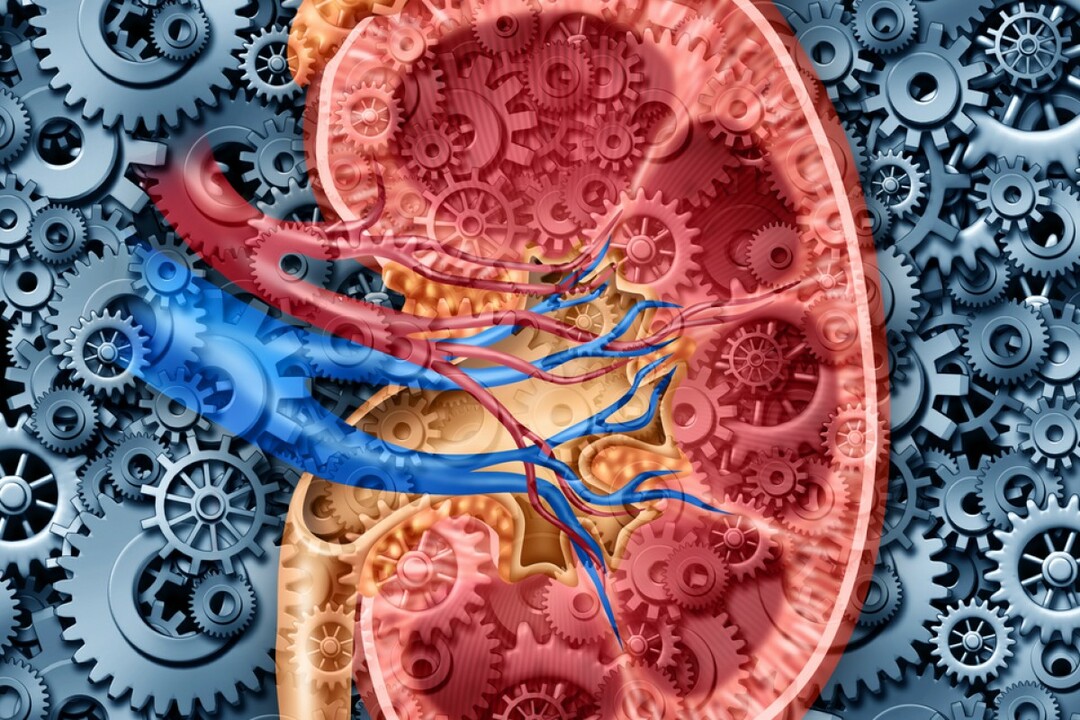 Acute renal failure( ARF) is a complex of symptoms caused by a sudden disruption of kidney function or a single kidney and is associated with damage to the tubular organ apparatus.The very diverse causes and the complete absence of early symptoms of the disease make it very dangerous for the patient.
Acute renal failure( ARF) is a complex of symptoms caused by a sudden disruption of kidney function or a single kidney and is associated with damage to the tubular organ apparatus.The very diverse causes and the complete absence of early symptoms of the disease make it very dangerous for the patient.
Kidney Function
The mechanisms of the effects of the kidneys on organs and systems of the human body can be described for a long time.And you can just say that it is they who own the "honor" of maintaining the chemical balance in the body.Thanks to the kidneys, the lion's share of poisons, medicines, and metabolic products are washed out of the blood.They save us from surplus water, participate in metabolism and even synthesize hormones.And that's why a person without kidneys can not live if his blood is not purified by other methods.

Causes of acute renal failure
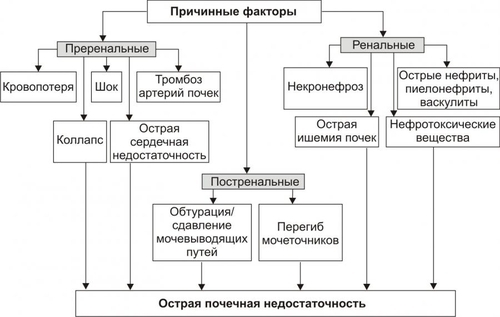
All causes of renal failure can be divided into three groups depending on where they are located relative to the kidney structures:
- Prerenal are diseases in which deterioration occursBlood supply to the kidneys;
- renal, in which the pathology is located in the kidneys themselves and affects their structures( glomeruli and tubules);
- postrenal, which occurs due to urinary outflow disorders:
- due to obstruction or compression of ureters;
- lesions of the bladder, losing urine ejection capacity;
- narrowing of the urethra.
For prerenal reasons, shock and similar conditions occur in which blood supply to the kidneys drops sharply.Due to oxygen starvation and deterioration of the nutrition of the body, the tubules begin to be damaged in it, through which the urine is released.
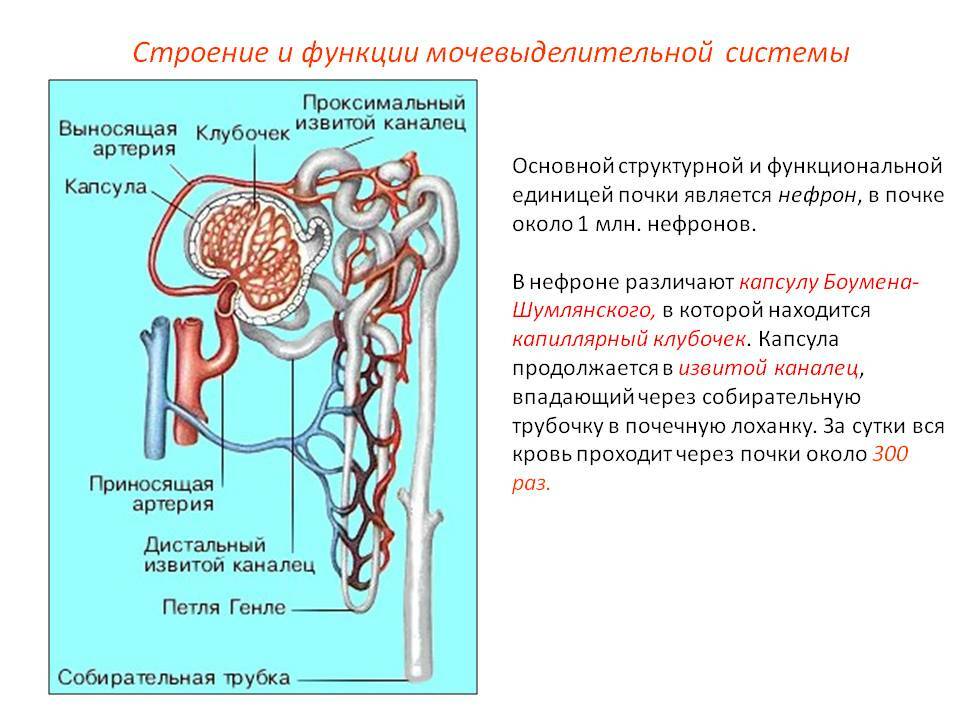
Renal causes are infections, poisoning by various poisons, side effects of certain drugs.
Emergency causes are all diseases that prevent the flow of urine from the tubular system. These include:
- obstruction of ureters with stones, blood clots, particles of epithelium with necrotic papillitis;
- compression of the ureters by tumors of the abdominal cavity and pelvis, retroperitoneal fibrosis;
- bladder damage by stones, tumors, parasites;
- inflammatory obstruction of the neck of the bladder( blockage of the outlet from it due to inflammation);
- prostate adenoma;
- is a disorder of the nervous regulation of a muscle that ejects urine in spinal cord injuries, diabetes mellitus with neuropathy( nerve damage);
- narrowing of the urethra due to urethritis.
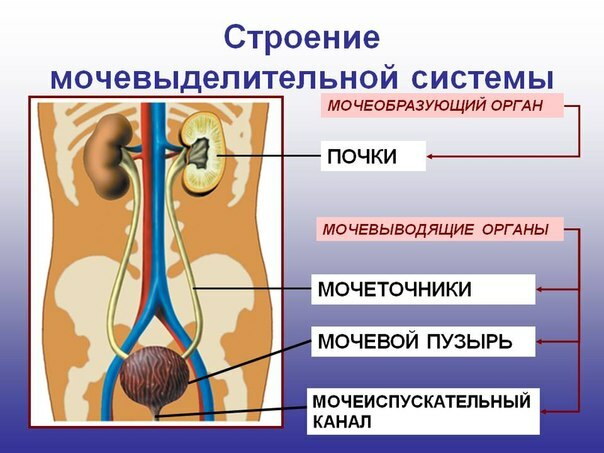
Isolated acute renal failure, which develops due to anomaly of development - the absence of both kidneys in the newborn.Such children, unfortunately, are not viable and die in the first days of life.This can also include ARF due to the removal of a single kidney or its traumatic destruction.
For more information on the causes of kidney failure, see the video review:
Clinical diagnosis of acute renal failure
According to the standard algorithm for examining any patient, the physician first needs to find out the history of the disease, especially referring to:
- associated chronicDiseases;
- recently transferred acute pathology;
- recently taken medicines;
- possible contact with toxic substances.
After this, the subjective signs of ARF are found out, that is, what the patient himself feels or notices:
- Decrease in the amount of excreted urine or its complete absence;
- appearance of edema;
- signs of intoxication:
- loss of appetite, especially with regard to protein products;
- sleep disorders, weakness, headaches;
- nausea, vomiting, diarrhea, flatulence.
The examination reveals pain in palpation of the kidneys, swelling, pallor of the skin and visible mucous membranes.Arterial hypertension is a frequent companion of acute renal failure, and if it existed before, its course sharply becomes heavier, sometimes leading to the development of acute heart failure with an extremely unfavorable prognosis for life.
In general, the arrester undergoes several stages in its course:
- Initial, in which there are only symptoms of the underlying disease or signs of intoxication with an appropriate poison.
- The stage of oligoanuria is a stage during which urinary excretion progressively decreases down to zero.It is at this stage that the OPN is most clearly manifested.
- The stage of restoration of diuresis, when the symptoms gradually subside, urine begins to separate, the amount of it gradually increases.
- The stage of recovery with the disappearance of all signs of the disease.
The symptoms and methods of diagnosis of acute renal failure are described in the video:
Laboratory and instrumental diagnostics of the surge arresters
The main criterion for the diagnosis of acute renal failure is the absence of urine in the bladder.This is determined very simply - the catheterization of the organ.If there is no urine - then the patient has acute renal failure, if there is - then it's just a matter of delaying urination.
The introduction of a catheter to the renal pelvis allows you to determine if there is an obstruction in the ureter that causes the development of an artery.
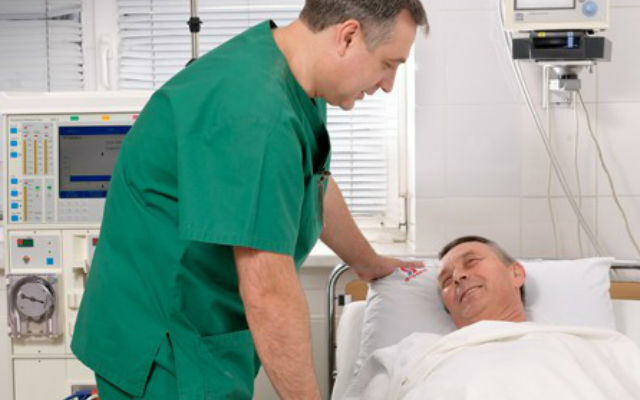 An important method of diagnosis is the examination of urine, if it is available in at least a minimal amount:
An important method of diagnosis is the examination of urine, if it is available in at least a minimal amount:
- the presence of hemoglobin in it indicates hemolysis( destruction of red blood cells);
- an admixture of myoglobin speaks of a crash syndrome( long crush syndrome);
- crystals of sulfonamides - about kidney damage with drugs of the appropriate group.
Instrumental studies of the type of radiography of kidneys with contrast material, ultrasound, computed tomography can reveal the expansion of the renal tubular system, determine the position of the organs, their dimensions, and also identify tumors and stones that close the ureteral lumen.
Obligatory laboratory method is the detection of levels of urea, creatinine, electrolytes of blood plasma and the determination of its acid-base state.Based on these data, a decision is made on the appointment of hemosorption, plasmapheresis, hemodialysis.
Treatment of acute renal insufficiency
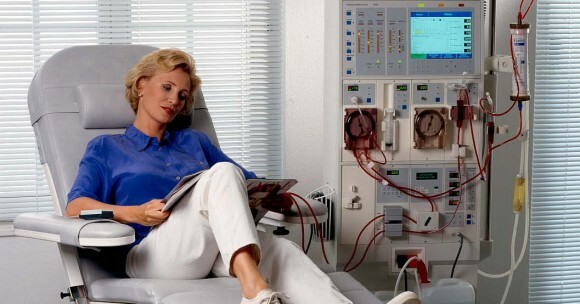 Some of the cases of ARF are not bad for treatment, although the mortality rate is from 26 to 50%.However, the earlier the disease is identified, the more likely the patient will be to recover, sometimes even without consequences.
Some of the cases of ARF are not bad for treatment, although the mortality rate is from 26 to 50%.However, the earlier the disease is identified, the more likely the patient will be to recover, sometimes even without consequences.
Given that the OPN is never an independent disease, but only complicates the existing pathology, treatment should begin with the elimination of the cause.For this, anti-shock measures are performed, heart activity is restored, blood loss is eliminated, blood substitutes are injected intravenously, which improves blood supply to the kidneys.
With the existing mechanical obstacles, they are surgically removed by methods of catheterization of the ureters, nephrostomy.
When poisoning with poisons or medicines, it is important early onset of detoxification activities with gastric lavage, the introduction of large amounts of sorbents into the digestive system, the use of antidotes.Depending on the type of poison, it is possible to use hemosorption and hemodialysis.The latter method in some cases becomes the patient's only chance of survival.
In terms of treatment of arthritis, the first place is restoration of diuresis( urine production).For this purpose, intravenous infusions of strictly measured doses of solutions in combination with diuretics are used.
After elimination of acute phenomena and recovery of urine output, doctors are turning to the use of drugs that improve microcirculation in the kidneys, activate the metabolism in them, restore their function.
Acute renal failure refers to the category of terminal conditions, that is, diseases in which the risk of death is high.Fortunately, in many cases it is reversible, and therefore every patient has a chance of survival.Timely treatment of concomitant diseases, constant monitoring of people with kidney diseases in a urologist, greatly reduces the risk of arterial hypertension.
The modern methods of treating acute renal failure are described in detail in the video review:
Bozbey Gennadiy, medical reviewer, ambulance doctor
